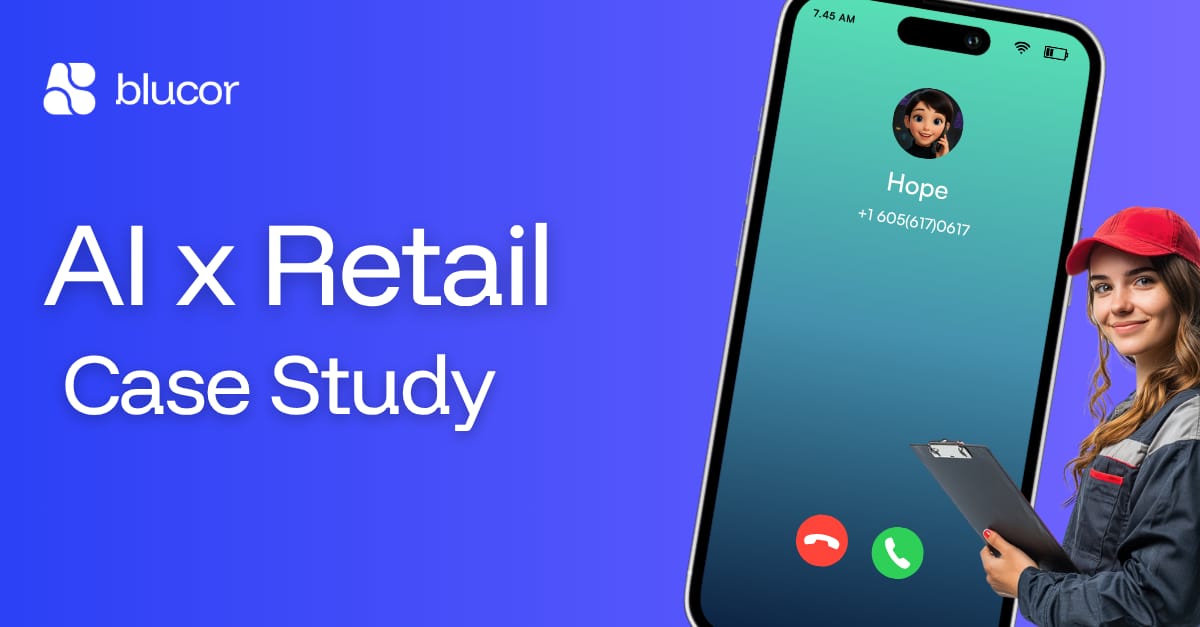- Blucor's Newsletter
- Posts
- How Walmart Solved Its Seasonal Hiring Bottleneck with AI Recruiting
How Walmart Solved Its Seasonal Hiring Bottleneck with AI Recruiting

TL;DR:
Walmart faced massive seasonal hiring surges and high turnover across its 4,600 U.S. stores. By adopting AI-driven recruiting tools to automate screening and scheduling, the company cut hiring time by more than half, improved candidate experience, and reduced recruiter workload.

Retail’s Hiring Pressure Cooker
Retail hiring is a race against time. Seasonal peaks, high turnover, and unpredictable applicant surges make it nearly impossible for recruiters to keep up. During the 2023 holiday season, U.S. retailers added more than 450,000 temporary workers to meet demand, according to the National Retail Federation (NRF, 2023).
Walmart, the nation’s largest private employer, was no exception. Each year, it hires tens of thousands of seasonal associates to handle holiday traffic. But manual screening and scheduling created bottlenecks that slowed hiring and frustrated both recruiters and candidates.
The Challenge: Too Many Applicants, Too Little Time
Walmart’s talent acquisition team faced three persistent problems:
Application overload: Thousands of applicants per week, many unqualified for the specific roles or shifts available.
Manual screening bottlenecks: Recruiters spent hours on repetitive phone screens to confirm basic details like availability and work authorization.
Candidate drop-off: Many qualified applicants abandoned the process before scheduling interviews.
In 2022, Walmart’s average time-to-hire for hourly roles hovered around 12 days, according to HR Dive (2022). That delay meant losing strong candidates to competitors like Target and Amazon, who were moving faster with automated systems.
The Solution: AI-Powered Screening and Scheduling
To fix the bottleneck, Walmart expanded its use of AI recruiting technology across its U.S. operations. The company partnered with Eightfold AI and Paradox’s Olivia, a conversational AI assistant that automates candidate engagement and scheduling (Paradox, 2023).
Here’s how the new system worked:
Instant Application Review: AI tools screened applications in real time, checking for location, shift availability, and basic qualifications.
Automated Conversations: Candidates received text messages or voice calls from the AI assistant, which conducted short interviews and answered FAQs about pay, shifts, and benefits.
Smart Scheduling: Qualified candidates were automatically invited to schedule interviews with store managers, often within hours of applying.
This automation replaced the bulk of manual screening and scheduling work, freeing recruiters to focus on final interviews and onboarding.
Results: Faster Hiring, Happier Candidates
The results were measurable and immediate. According to Forbes and Business Insider reports (2023):
Time-to-hire dropped by more than 50%. Many candidates completed the entire process—from application to offer—within 24 hours.
Candidate satisfaction improved significantly. Walmart reported higher engagement rates and lower dropout rates among applicants who interacted with the AI assistant.
Recruiter workload decreased. The automation handled thousands of candidate interactions daily, reducing manual screening hours by more than 100 hours per recruiter each month.
Diversity and inclusion improved. AI tools helped standardize screening questions and reduce bias in early-stage evaluations.
Walmart’s Chief People Officer, Donna Morris, told Forbes that automation “helps us meet candidates where they are—on their phones—and move faster without sacrificing fairness or quality.”
Lessons for Retail Hiring Teams
Automate the repetitive, humanize the rest. Let AI handle screening and scheduling so recruiters can focus on interviews and culture fit.
Speed is a competitive advantage. In retail, the first company to contact qualified candidates usually wins.
Meet candidates on their terms. Mobile-first, conversational AI makes it easy for applicants to engage anytime, anywhere.
Use data to refine hiring. AI analytics reveal which questions and channels produce the best hires, improving each hiring cycle.
The Broader Impact
Walmart’s success mirrors a growing retail trend. Companies like Target and Kroger have also adopted AI recruiting tools to manage seasonal surges. Target’s use of Paradox’s AI assistant helped it hire 100,000 seasonal workers in 2023, cutting time-to-hire by 40% (Paradox, 2023).
These results show that automation isn’t just a tech upgrade—it’s a workforce strategy. Retailers that integrate AI into their hiring process can scale faster, reduce costs, and deliver a better candidate experience.
The Takeaway
Retail recruitment doesn’t have to be a seasonal scramble. Walmart’s case proves that AI recruiting can turn hiring chaos into a predictable, efficient process. By automating screening and scheduling, retailers can keep stores staffed, recruiters focused, and candidates engaged—all year long.
Sources:
National Retail Federation (2023). Holiday Hiring Forecast.
HR Dive (2022). Walmart speeds up hiring process for hourly workers.
Forbes (2023). How Walmart Uses AI to Transform Hiring and Workforce Management.
Paradox (2023). Case Study: Walmart and Target Use Conversational AI to Hire Faster.
Business Insider (2023). Walmart’s AI Recruiting Strategy Cuts Hiring Time in Half.